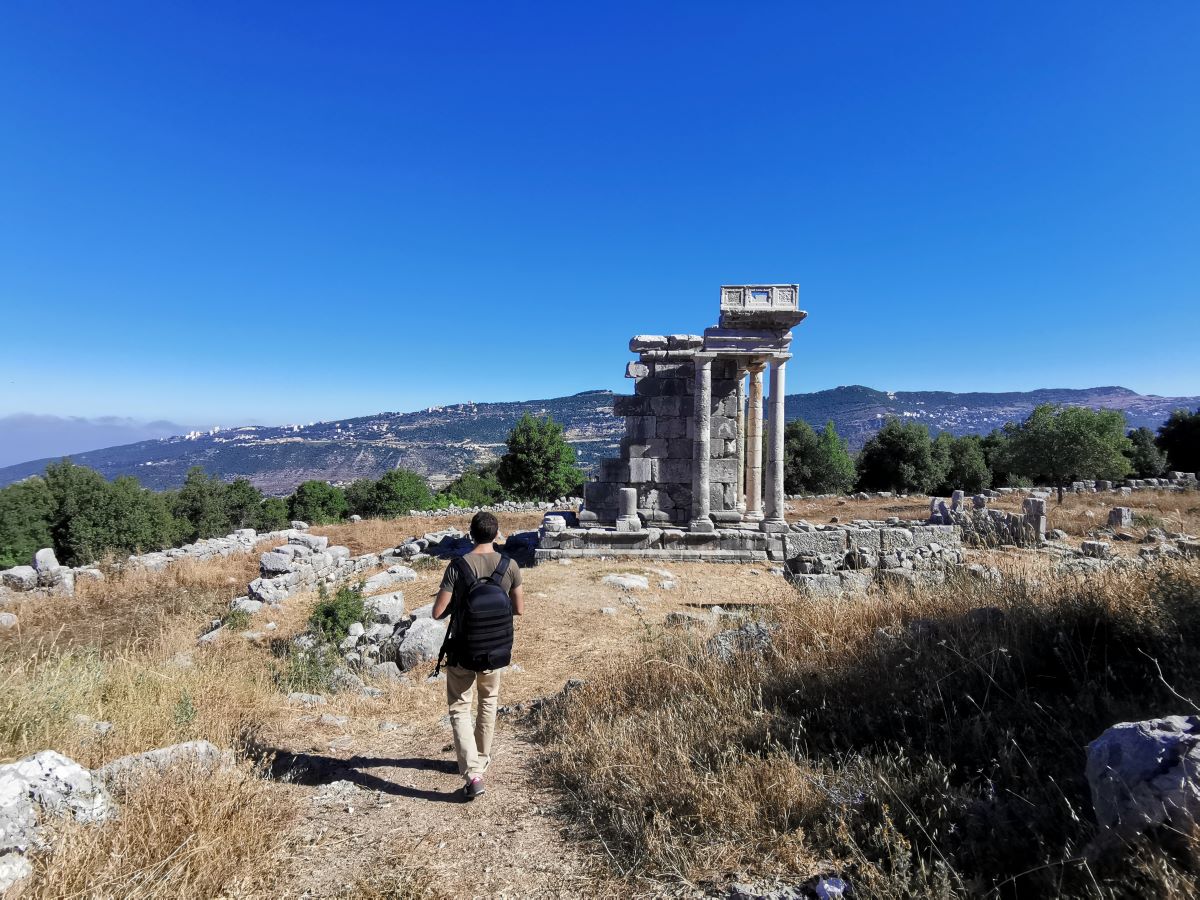Located on the old Roman road that links Byblos to Jabal el Mnaitra – Yammouneh – Baalbek, the so called “Machnaqa” site houses a well preserved Roman altar, one of the few left in Lebanon.
Following minor excavation and restoration missions executed in the early 1960’s in and around Machnaqa site, archeologists were able to produce a comprehensive study about the funerary, religious and ceremonial practices performed in rural Mount-Lebanon during antiquity.
Timeline
The altar is believed to have been erected between the 1st and the 2nd century AD, on top of an earlier structure that probably date back to the Phoenician era.
Structure
The site of the altar is accessible throught a portico (main gate) that leads into a temenos (big court yard).
Built form local limestone, the altar is an 8 meters tower that probably had a stair that leads to the roof where sacrifices were performed during ceremonial rituals.
Surrounded by 4 doric columns from each side, only the eastern and southern colonnades are preserved.
Following the doric order, the columns are topped by an entablature (the upper part that is supported by a colonnade), which frieze (a section of the entablature decorated with bas-reliefs) used to be decorated with bas-reliefs relfecting the ceremonial rituals that took place on site.
Deity
The altar is claimed to be linked to the myth of Adonis since it stands on a hill that overlooks the Adonis River (Nahr Ibrahim currently). However, no inscriptions were found on site so far to accept this theory.
Tombs
On the northern side of the site, 3 well-preserved rock-tombs with funerary bas-reliefs are visible, dating back anywhere between the second half of the first millennium BC and the 3rd century AD, similar to the Ghineh and Hejoula tombs.
Some scholars suggest that the steles may be linked to funerary rites, whereas the representations depict important figures that passed away, and were honored by representing them on rocks near their tombs. In the case of Hejoula stele, the figure in the main frame might be the main subject being honored by members of his/her village or family.
Around the Altar
On the southern side of the site, one can contemplate the awe-inspiring view of the valley of Adonis/Nahr-Ibrahim.
Some tens of kilometers further east, two important attractions to visit – Yanouh site and Apheca temple.
Karim Sokhn
Tour Operator & Tour Guide
References:
Mission de Phénicie, Ernest Renan, 1864-74
La vie Religieuse Au Liban Sous L’Empire Romain – Julien Aliquo
https://www.persee.fr/doc/syria_0039-7946_1940_num_21_2_4185








